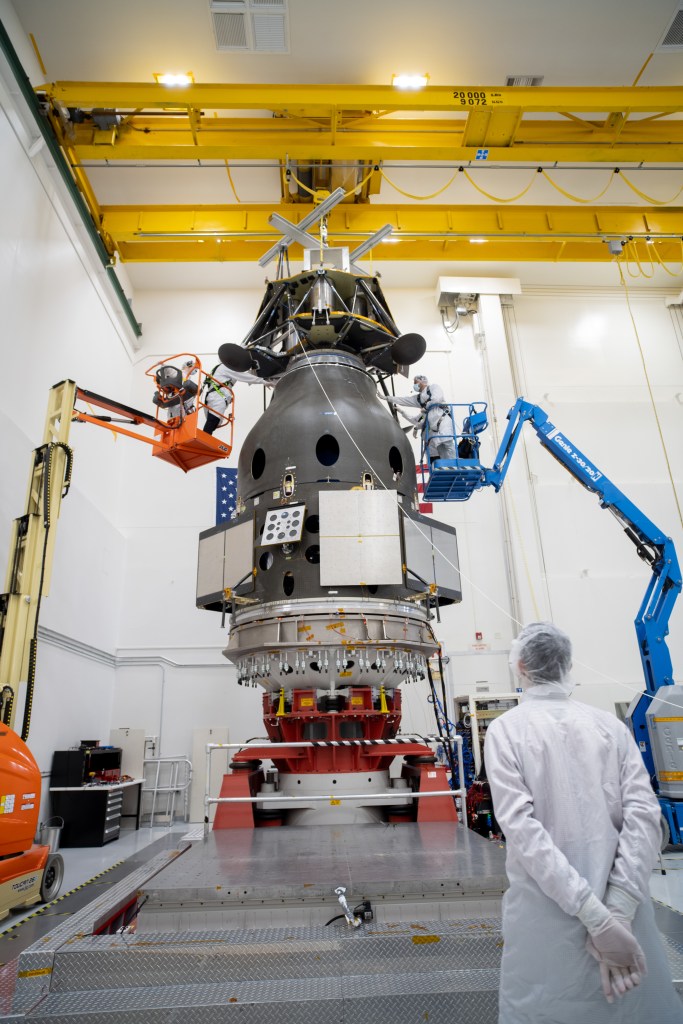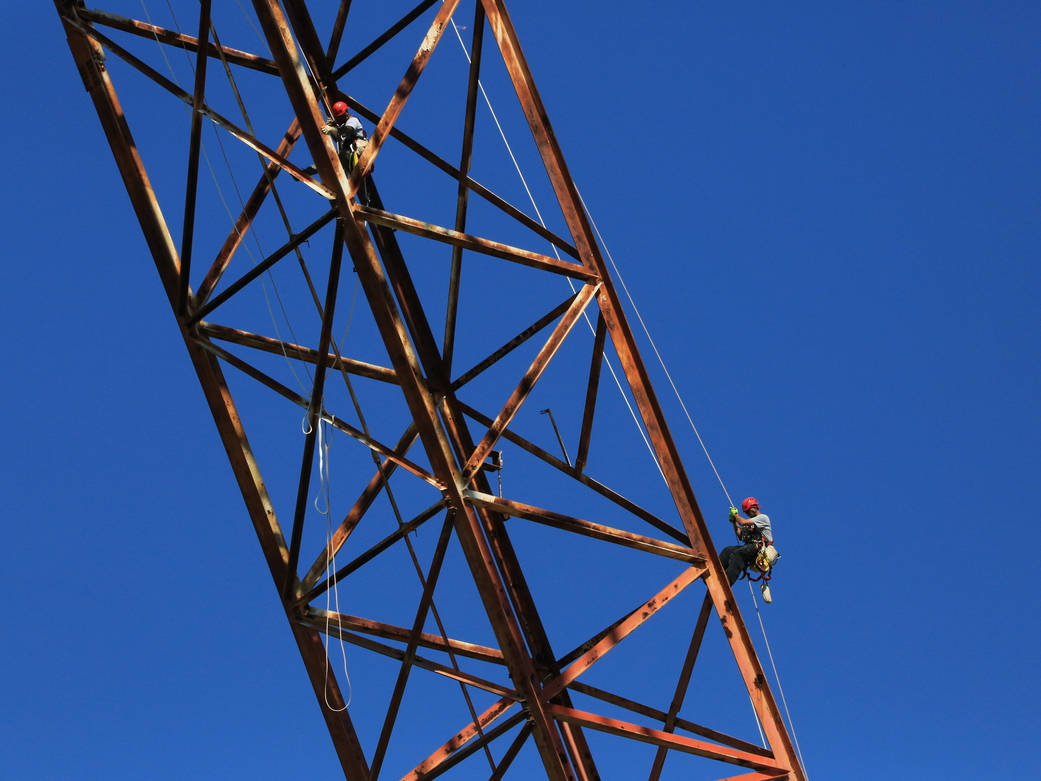Technicians perform a structural inspection of NASA Langley’s Landing and Impact Research Facility (LandIR).
A national historical landmark, the LandIR vehicle structural testing complex — better known as the “gantry” — was built in 1963 to train astronauts to land on the moon. Since then, the 240-foot high, 400-foot long, 265-foot wide, A-frame steel structure has been used to provide crucial research test data on the crashworthiness of general aviation aircraft, commercial aircraft and rotorcraft.
IMAGE CREDIT: NASA/David C. Bowman
SOURCE: NASA Langley Research Directorate
History
When President John F. Kennedy confidently predicted in 1961 that the United States would land a man on the Moon by the end of the decade, the task of implementing what seemed to be a wildly ambitious goal fell to the engineers of NASA. The success of the chosen lunar-orbit rendezvous (LOR) strategy ultimately depended on whether the astronauts could learn to safely land the Lunar Excursion Module (LEM) on the Moon’s surface and return into orbit to dock with the mother ship.
A major obstacle in designing a training procedure, however, was that the LEM would handle far differently in the Moon’s atmosphere, with 1/6th the gravitational pull of Earth’s. The problem thus became how to reproduce the operation of the LEM in a low gravitational environment. The solution was conceived as an erector set model in the home workshop of W. Hewitt Phillips and came in the form of the Lunar Lander Research Facility (LLRF), a training simulator that allowed NASA engineers to study the complex lunar landing process and give the Apollo astronauts critical hands-on pilot training in the LEM.
The LLRF was completed in 1965 at a cost of $3.5 million. The most obvious feature of the LLRF was its enormous gantry, an A-frame steel structure measuring 400 feet long by 240 feet high. The LLRF simulated lunar gravity on the LEM through an overhead partial-suspension system that counteracted all but 1/6th of the Earth’s gravitational force, and allowed the vehicle to fly unobstructed within a relatively large area. The LLRF also was used as a lunar-walking simulator, with subjects walking on inclined planes while suspended by a system of slings and cables.
Until the end of the Apollo program in 1972, the LLRF was used to train 24 astronauts for lunar missions, including Neil Armstrong and Edwin E. “Buzz” Aldrin, Jr., of Apollo 11, the first men to walk on the Moon. Armstrong offered what was perhaps the greatest tribute to the importance of the LLRF in the success of the Apollo program. When asked what it was like to land on the Moon, he replied: “Like Langley.”
Although the end of manned lunar missions made the LLRF redundant by the early 1970s, NASA quickly found a new use for this Langley landmark, converting it into a full-scale aircraft crash test facility. Redesignated the Impact Dynamics Research Facility (IDRF), it was used to conduct important research on aircraft and other vehicles between 1974 and 2003.
The facility was re-opened in 2005 to conduct landing tests associated with the development of the Orion crew vehicle. Ironically, the testing would be remarkably similar to the original purpose of the LLRF — testing of the LEM. The facility was re-named the Landing Impact Research Facility (LandIR) and minor modifications were made to include installation of a new parallel winch system to support full-scale Orion testing.
Since NASA needed the capability to determine if the Orion landing would be via land or water, a more significant modification involved installation of a new hydro-impact basin (splashdown pool) underneath the gantry. Construction of the hydro-impact basin, which is 115 feet long, 90 feet wide and 20 feet deep, was completed in January 2011.
The historical significance of the LLRF and its many contributions to the U.S. space program were formally recognized when the facility was designated a National Historic Landmark in 1985. The LEM, designated a national historic landmark in 1986, is on display in the Virginia Air and Space Center/Hampton Roads History Center.
SOURCE: NASA CRGIS























